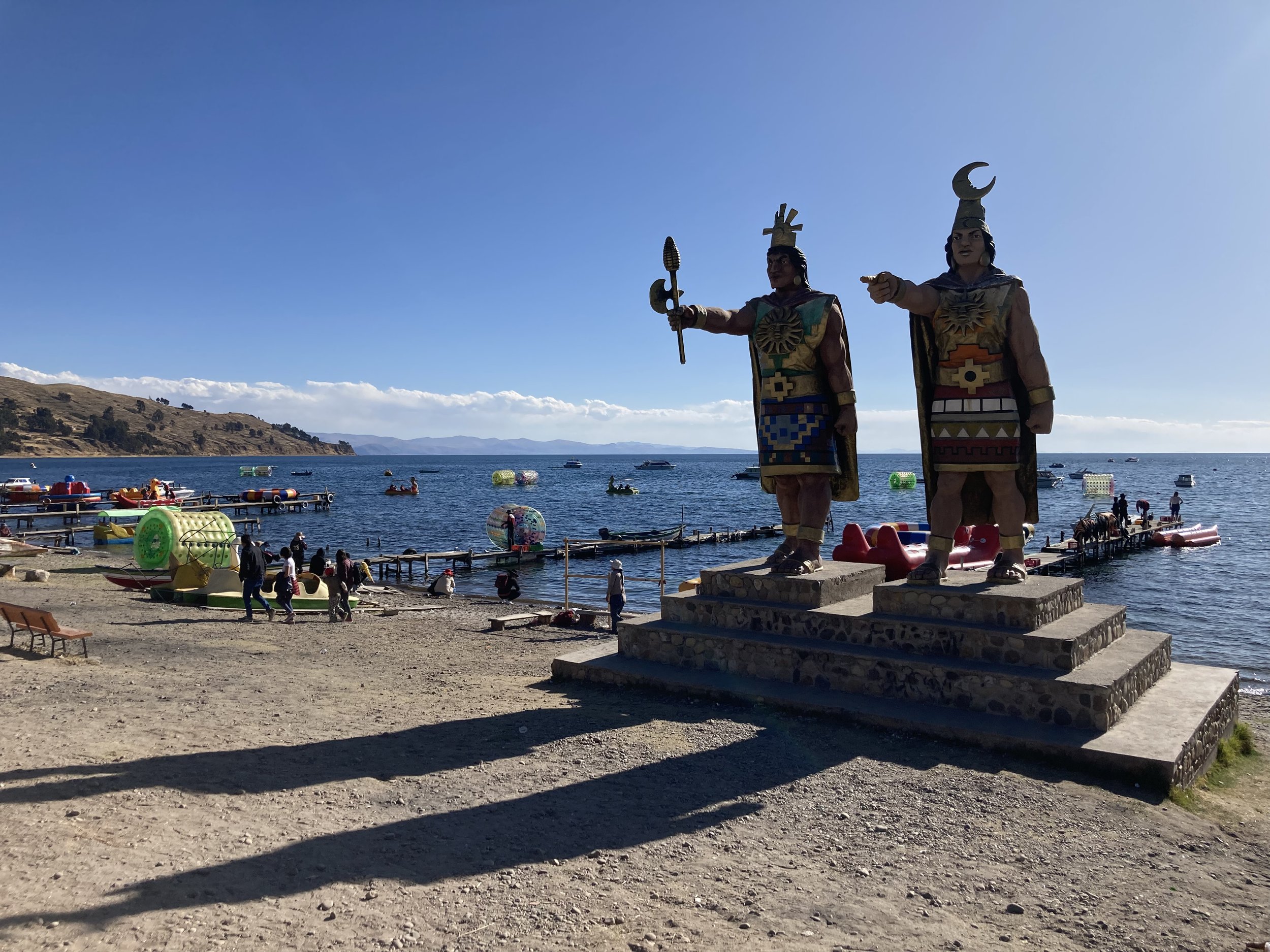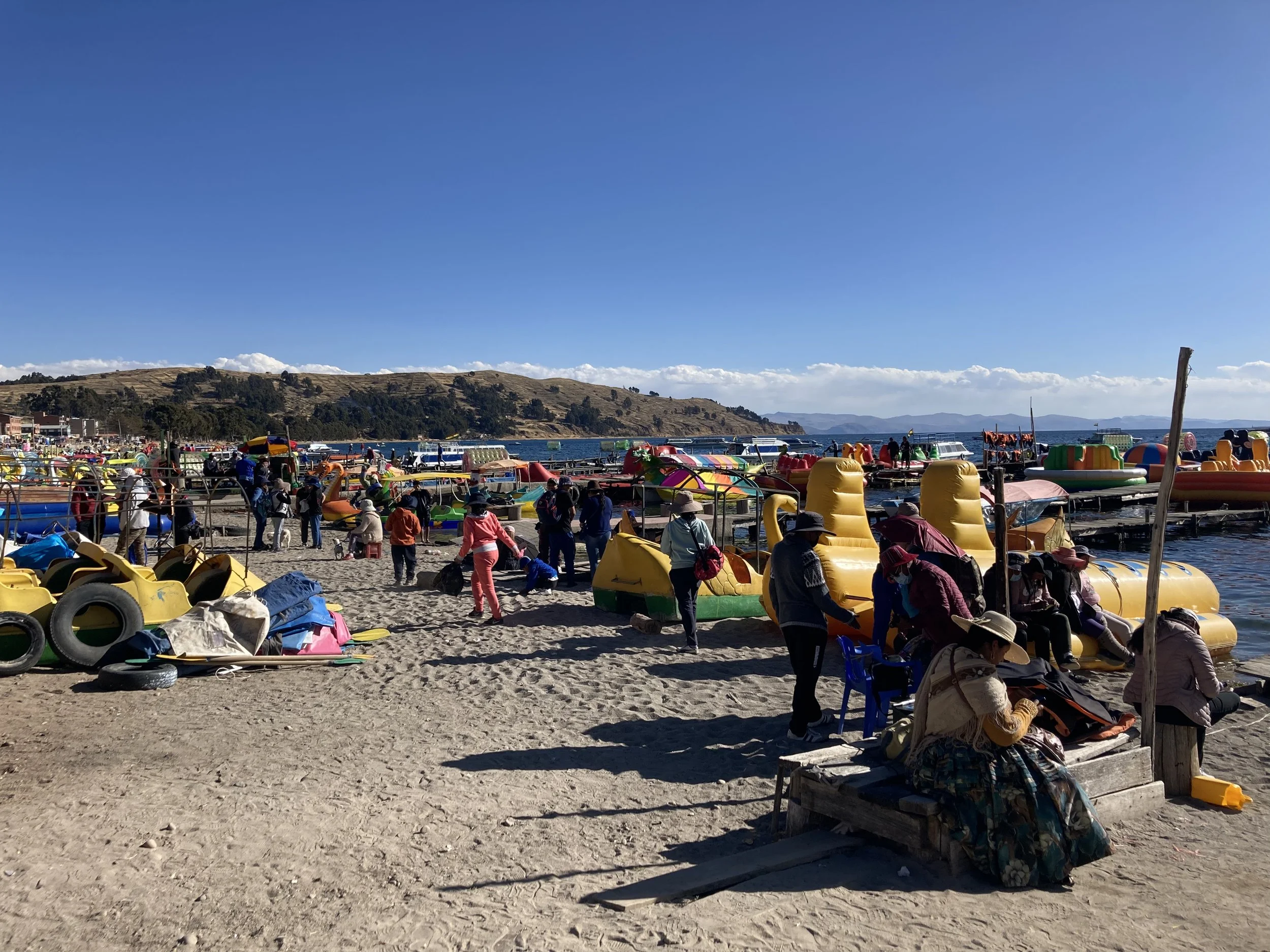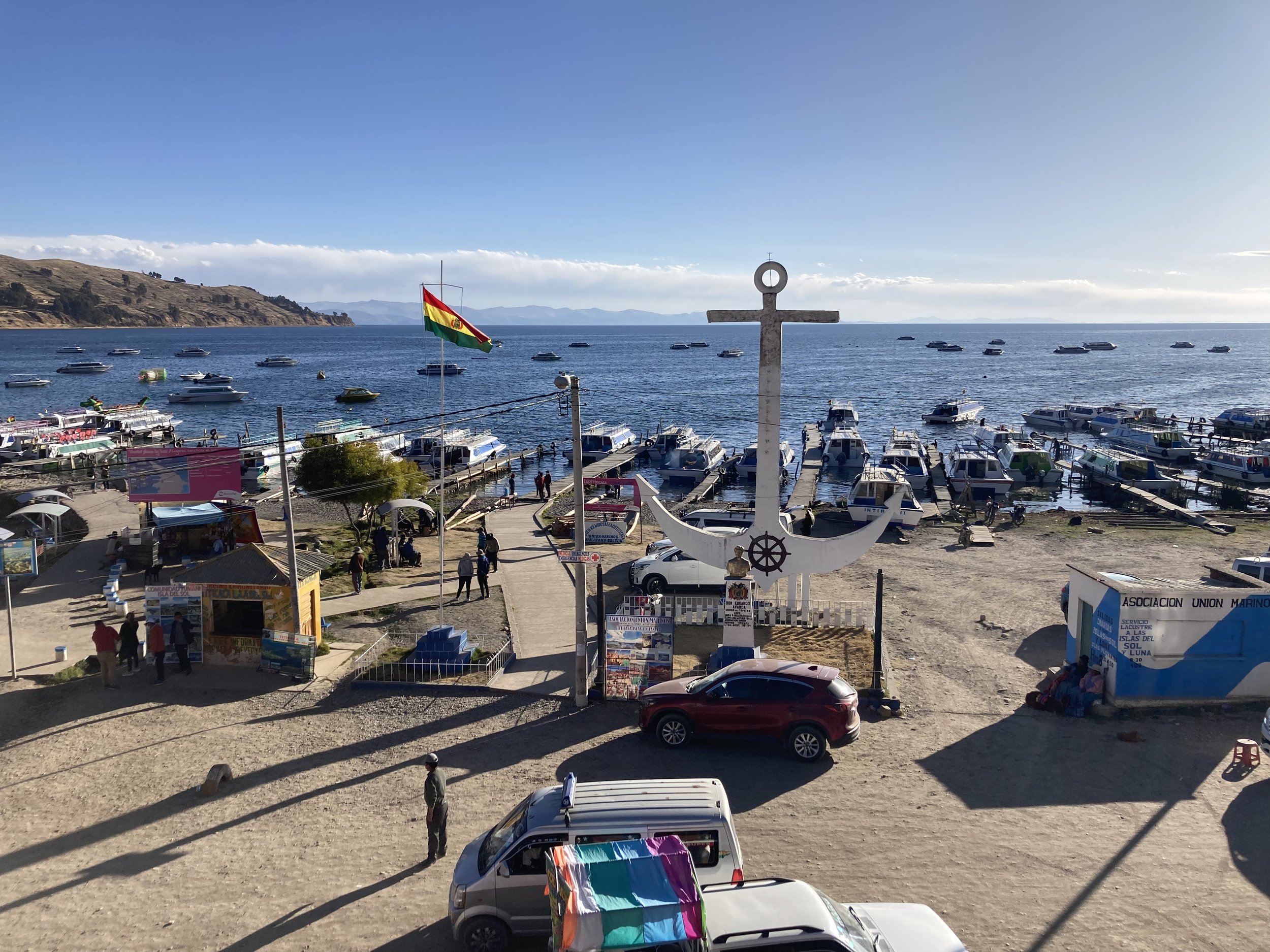Copacabana, Bolivia
What started as a mandatory stop on our Puno to La Paz bus ended up being the perfect introduction to Bolivia!
Our bus left Puno at 8am and we reached the Peru - Bolivia border an hour and a half later. Changing countries at a land border rather than an airport (particularly Houston, or anywhere in the US for that matter) proved to be a very simple and quite exciting experience.
We got off the bus, walked into the Peru immigration building to get our passports stamped, then walked into the Bolivia immigration building to get our passports stamped again. The little street that both buildings were on was decorated with red and white bunting (on the Peru side — the colours of the Peruvian flag) and Bolivian flags and a church on the Bolivian end; it was very charming. All in all the process took about half an hour. And then we got on a different, smaller bus that would be lightweight enough for our bus-on-a-boat trip later on the way to La Paz (more on that later)…
About 20 minutes drive after entering Bolivia we had a scheduled 4 hour stop at Copacabana: Bolivia’s equivalent of Puno, a seemingly seaside town on the edge of Lake Titicaca (another example of how big the lake is - we had been driving for a few hours by this point since Puno and we were still on the lake!). Most people had opted to do a boat tour to one of the islands but we decided we’d much rather chill and do absolutely nothing after non-stop touring the last few days. What an excellent decision this was!
A combination, I think, of zero expectations of Copacabana, and the unexpected warmth in the sun finally thawing us out after Cusco, and being totally in the minority (for once) as foreign tourists, resulted in a brilliant afternoon and both of us in very joyous moods.
Copacabana reminded me of Bournemouth beach, on a smaller and more South American scale. The place was full of locals who had come from elsewhere to Copacabana for a day out, to enjoy the food and the “sea” (the lake) and all the different types of boats and water sports. Everywhere you looked or listened there were people having a great time, hanging out with their friends and families, and all of the street sellers were targeting the Bolivian locals just as much as us. It felt like we were seeing real Bolivian life and this felt great.
Our four hours consisted of gorgeous sunshine, a leisurely beach stroll, eating and drinking (admittedly the worst Pisco sour I have ever had, I didn’t even manage half of it [Jeremy edit: My pina colada was the worst cocktail I’ve ever had. Still, a lovely place to drink it]), and non-stop people watching. Heaven.
We also discovered “ice rolls” - or helado a la plancha (yes that’s right, grilled ice cream). You pick your flavour - we chose fresh strawberry, and Oreos - and they cut up your fresh strawberries (or crumble your Oreos) on a cold, metal grill thing, pour on some milk once it’s reached a pulp, spread the mix over the grill, and after a minute when it’s cooled, use a spatula to scrape up the mix into perfect rolls. Add a couple of wafers, sauce, and hundreds and thousands and you have the most delicious ice cream you’ve ever tasted!
Rejuvenating pit stop over and we got back on the bus for the last leg of our trip to La Paz, already in love with Bolivia.






